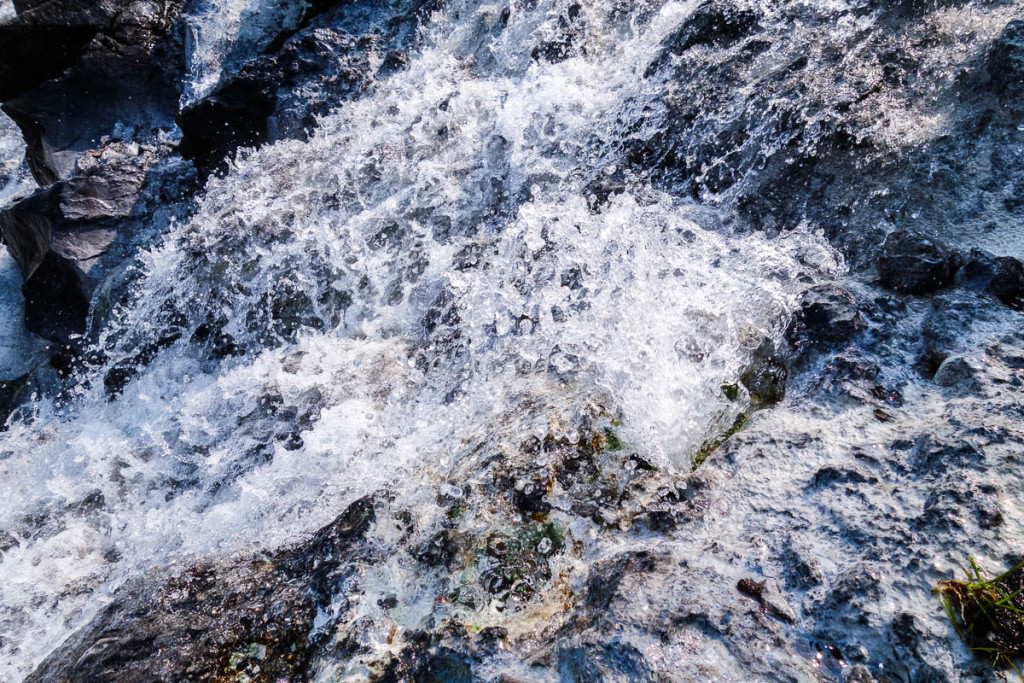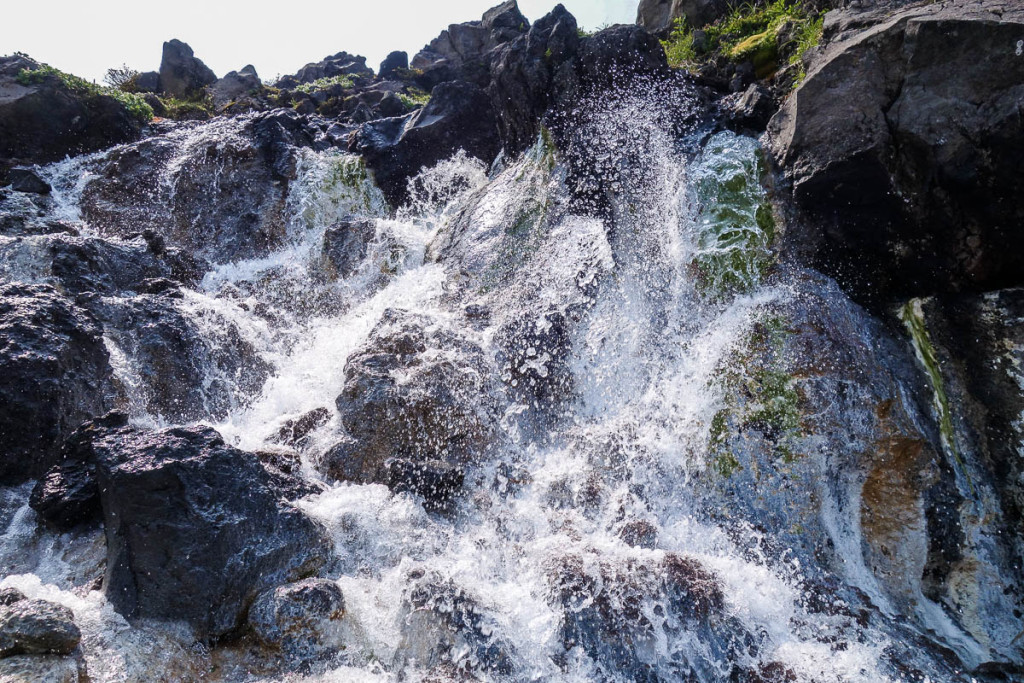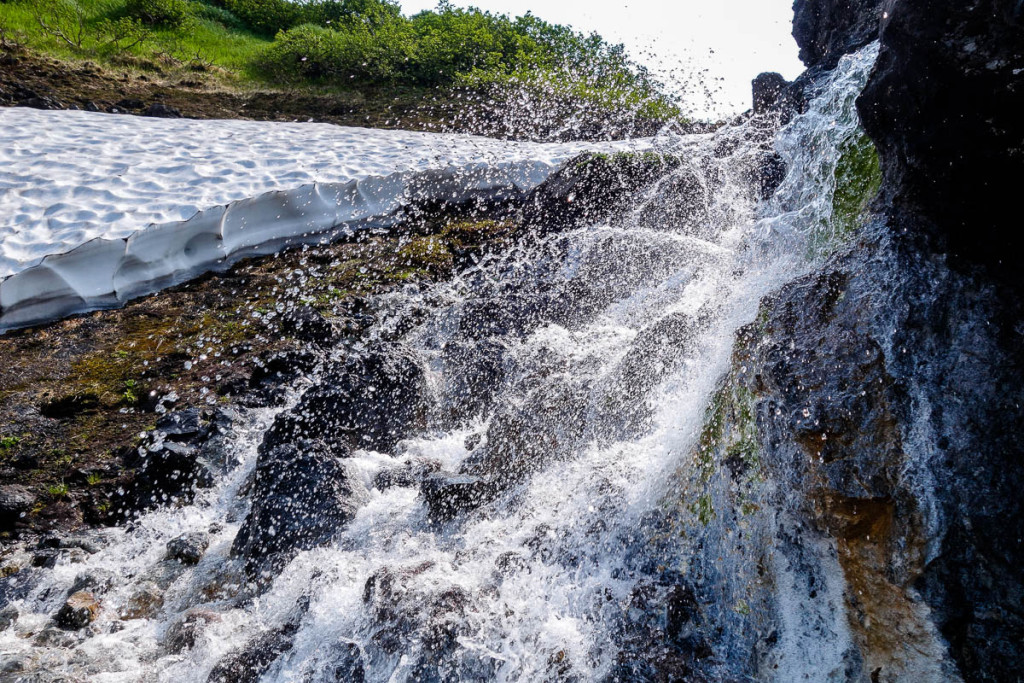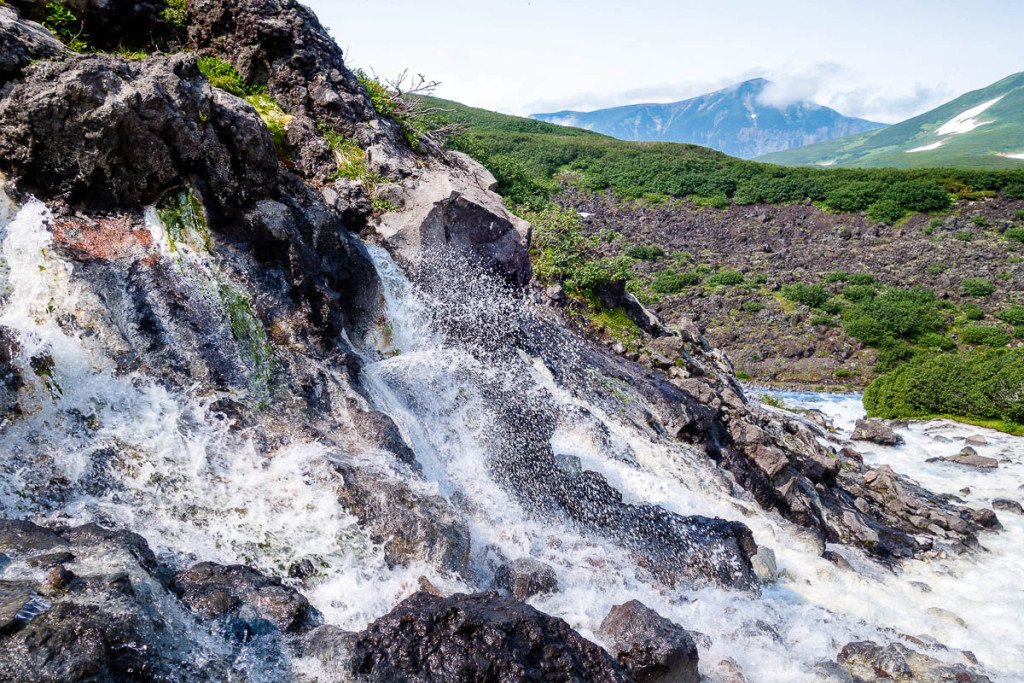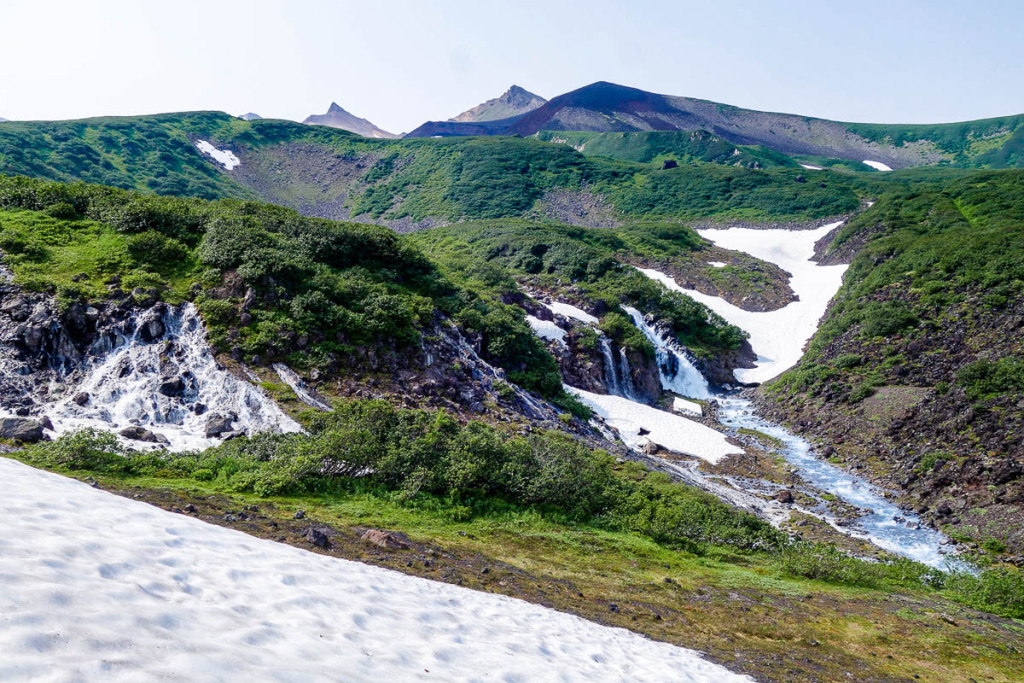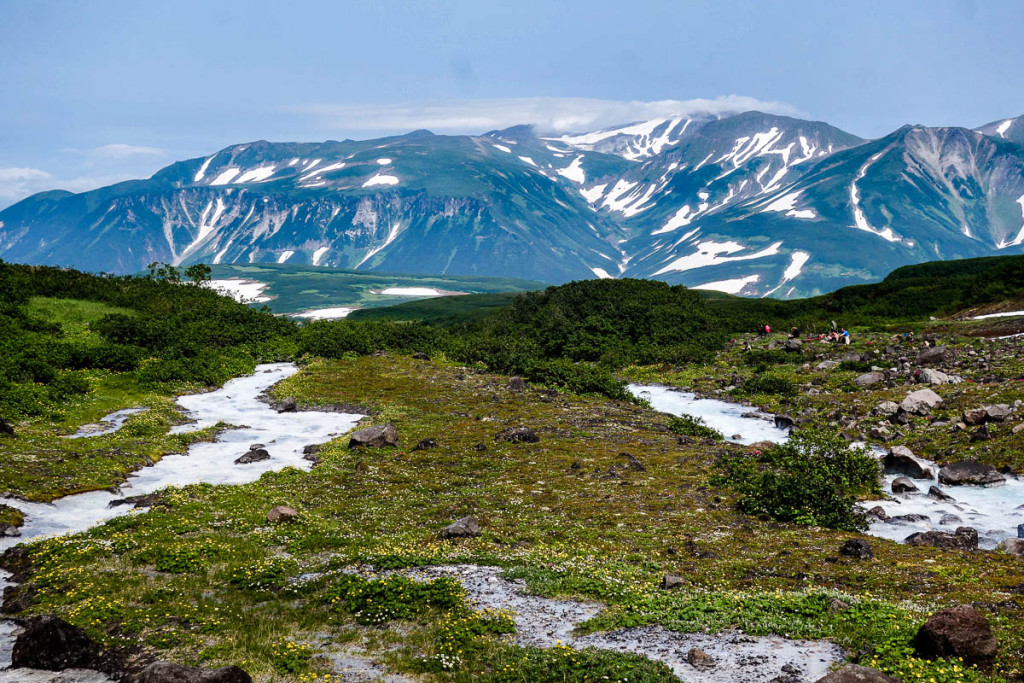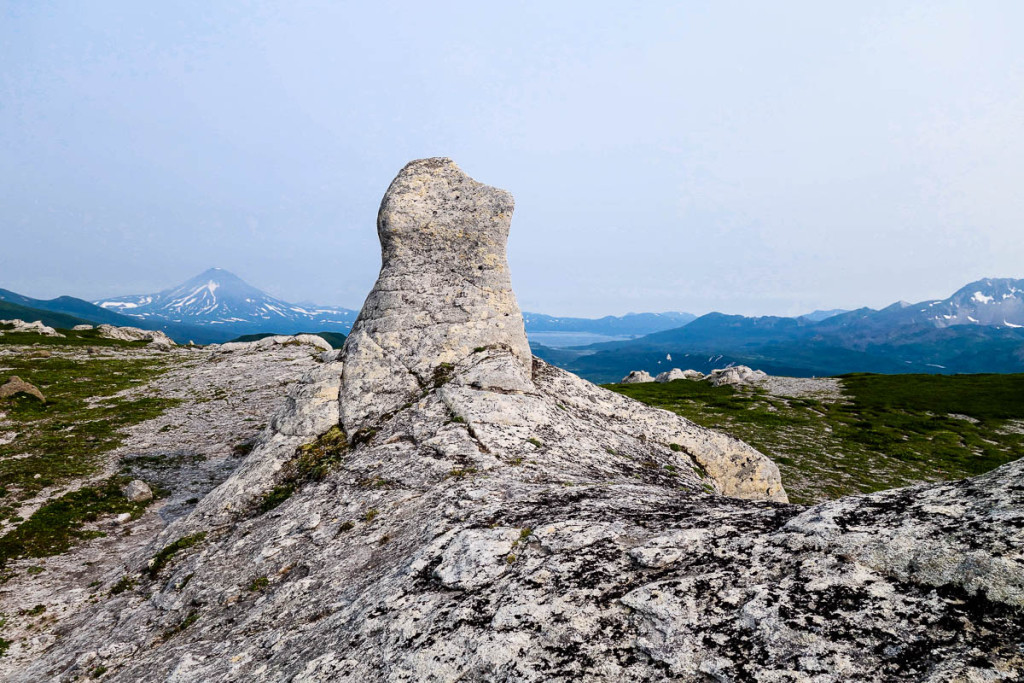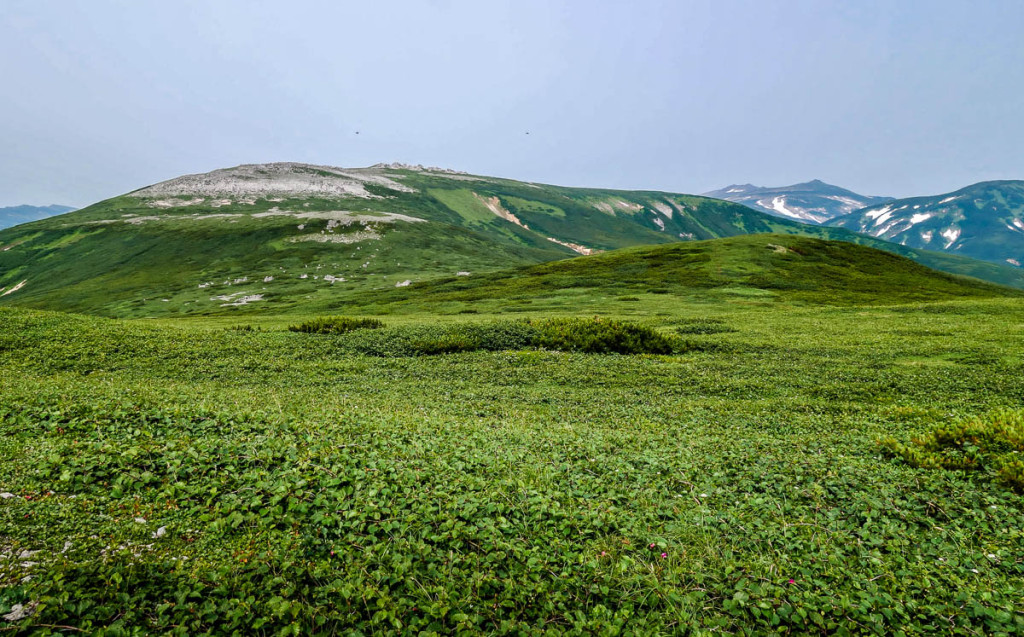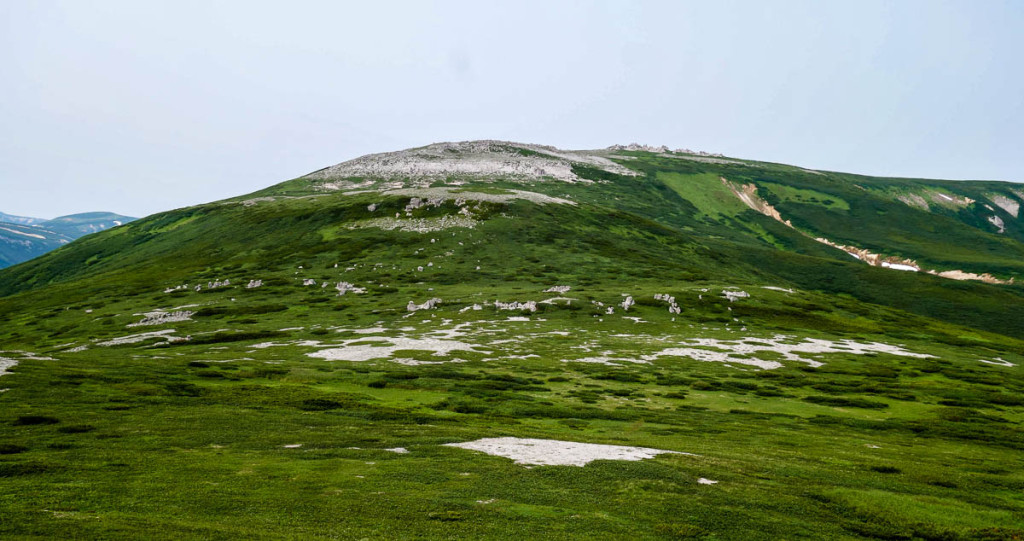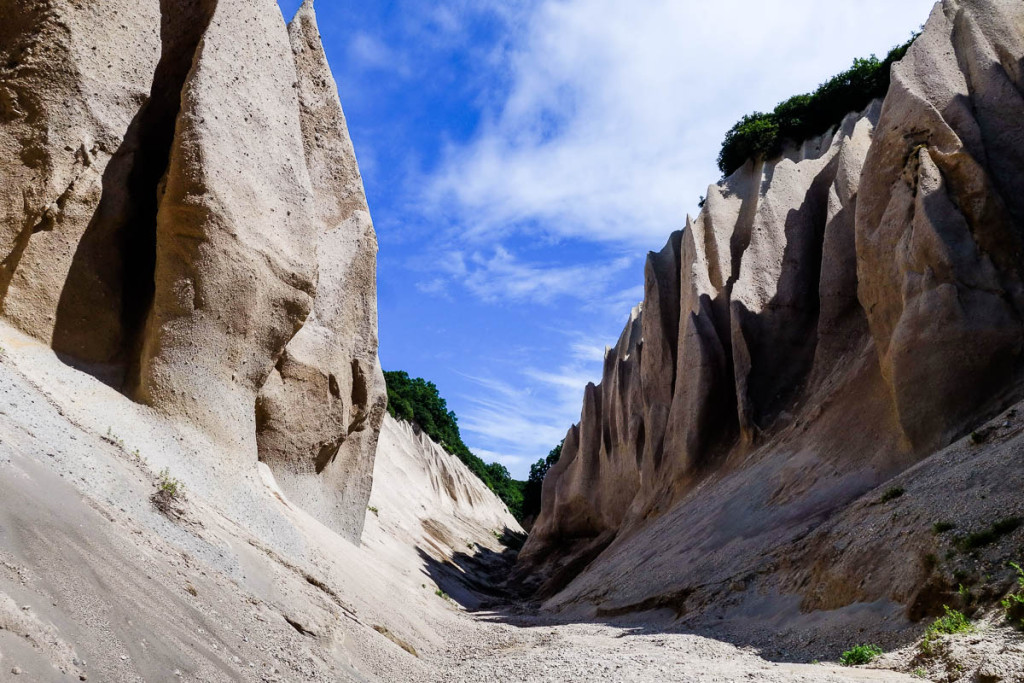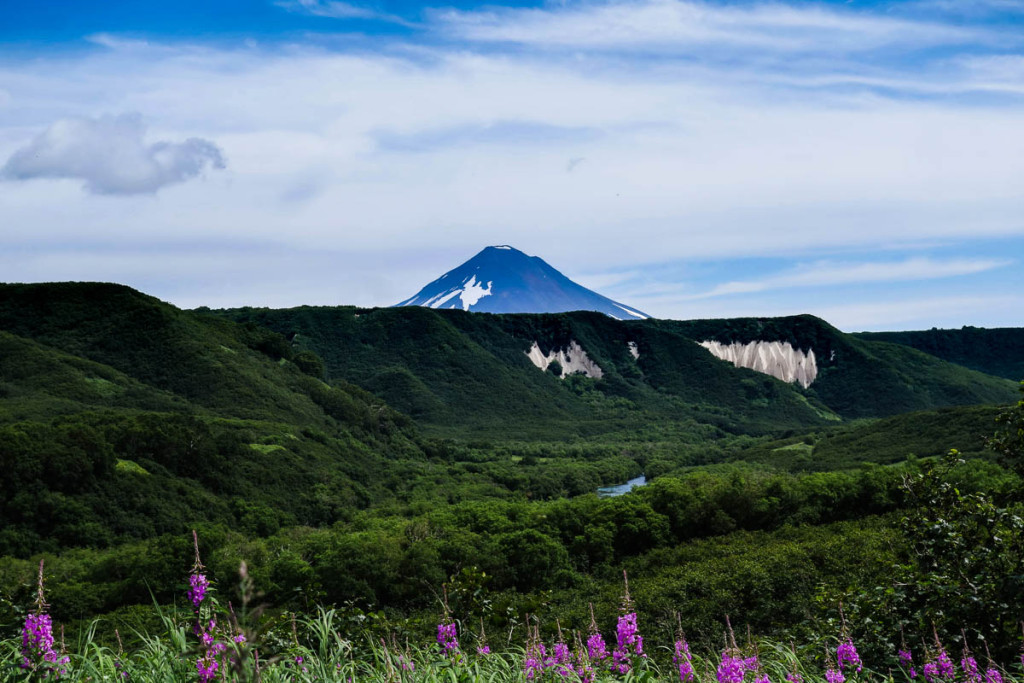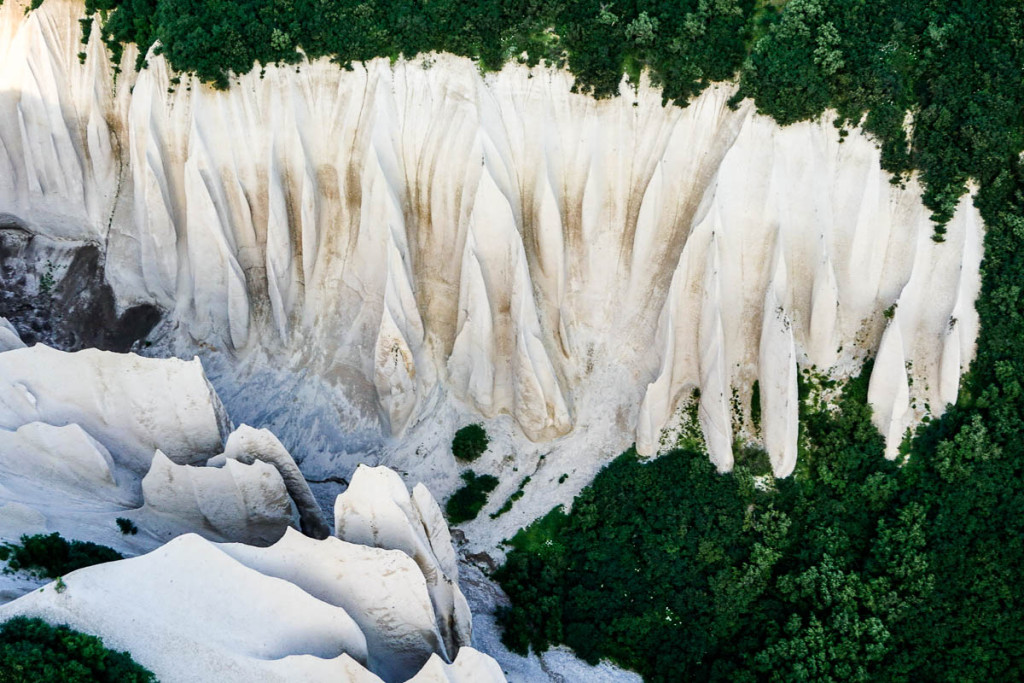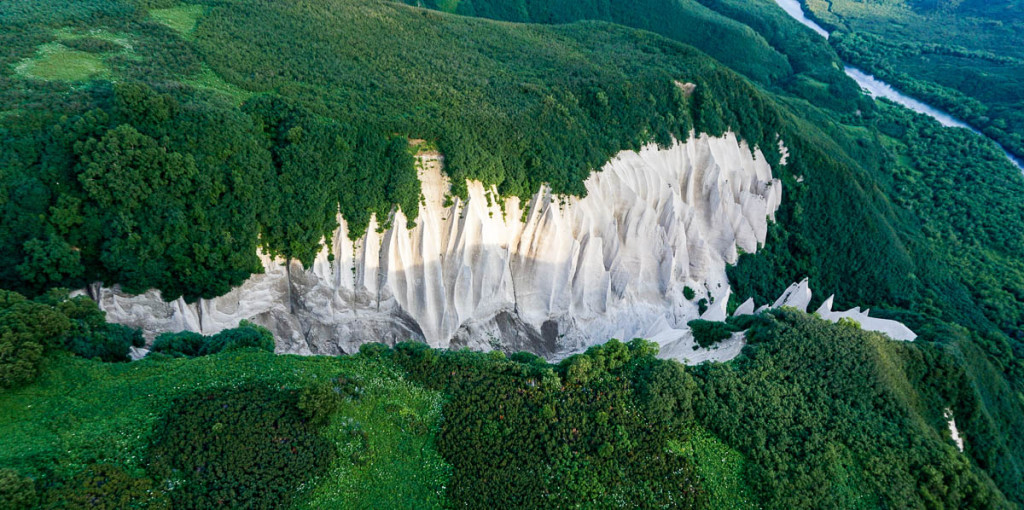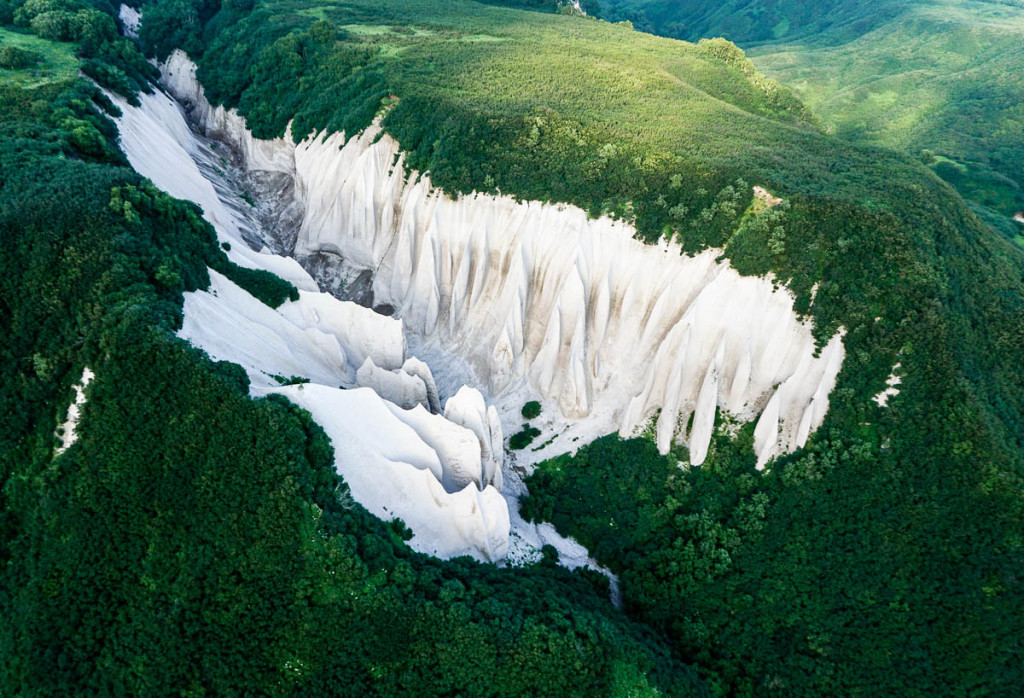October 16, 2015
Kamchatka-2015: white waterfalls and abandoned stone boats.
I first intended starting this post about three places of interest near Pauzhetka with a satellite photo of the vicinity (the area between the Sea of Okhotsk and Kurile Lake). However, I couldn’t find a single one on the net. Search engines could only come up with this detail-free specimen of topographical depiction: you zoom in, and get just a blur! Ok, so it’s a remote spot of the world, but really…
Anyway, first up: the White Waterfalls.
An amazing place! I’ve never seen natural fountains gushing from a cliff face (there are geysers of course, but they gush from the ground).
Jets of water spurting up and across and down from the rock. A pretty sight. A rather fantastical one too. Apparently bodies of water underground make their way up to the surface under pressure and out they pop.
This water isn’t just any old water: it contains plenty of aluminum oxide, which in some places paints the rocks onto which the water’s sprayed a perfect white color. My astuteness cracked it: this white painting of the rocks thing: that’ll be why these waterfalls are called White!
In the background on some of the below pics you can see the peaks of the mighty Koshelev volcano. But more about that in an upcoming post…
And here’s the view of Kambalny, more on which – also separately…
Btw, the water from of the White Waterfalls was rather chilly – and that was in summer. I imagine they ice over in winter. I bet that’s a sight worth beholding…
What we were particularly lucky with when visiting Kurile Lake and environs was the weather. It was perfect: a very rare thing in Kamchatka. So we made the most of it, quickly heading off in the direction of our next natural attraction: ‘Gorodok’ (Village) (no Wikipedia page – shame).
What is Gorodok?
It’s a high (but not too high) natural ‘stone village’ situated on a tall (but not too tall) mountain hill mound. Natural – as in, it wasn’t built by humans; it’s a work of the gods!
Up there on the mound – a natural stone kunst installation. Wind and rain for eons and eons shaped and sculpted this rocky outcrop to give what today does, just a little bit, resemble the ancient ruins of a village!
The occasional ancient Greek statue features:
Spooky Kamchatkan chimeras can also be seen now and again, for some reason dressed in bright orange:
Gorodok from below and afar:
The weather held up, so further we ventured – to our next natural attraction: Kutkhini Bati! This too doesn’t have a Wikipedia page: most unfair. For it’s an awesome place – very must-see. It’s situated on the right bank of the river, several kilometers from Kurile Lake.
These rock formations consist of volcanic pumice, which appeared after various Kamchatkan volcanisms were eroded over zillennia by the elements.
The folklore goes something like this: these are the boats (bati) of the ancient (Itelmen?) god Kutkha – a half-person-half-crow. When he’d finished his business on earth he flew away to some other planet, but he left his boats behind, and because Kutkha is taking such a long time in returning to tend to his abandoned boats, in the meantime they’ve turned into rock. Rock boats. Oh yes.
This wasn’t my first time here, but it was the first time I saw the bati from up above in a helicopter!
So there you have them: three outstanding volcanic-ethnographic-photographic-touristic-fantastic places on Kamchatka between Kurile Lake and the Sea of Okhotsk, which ALL NEED A WIKIPEDIA PAGE! Who’s up for writing them? :)
All the An-Kam-2015 pics are here.

